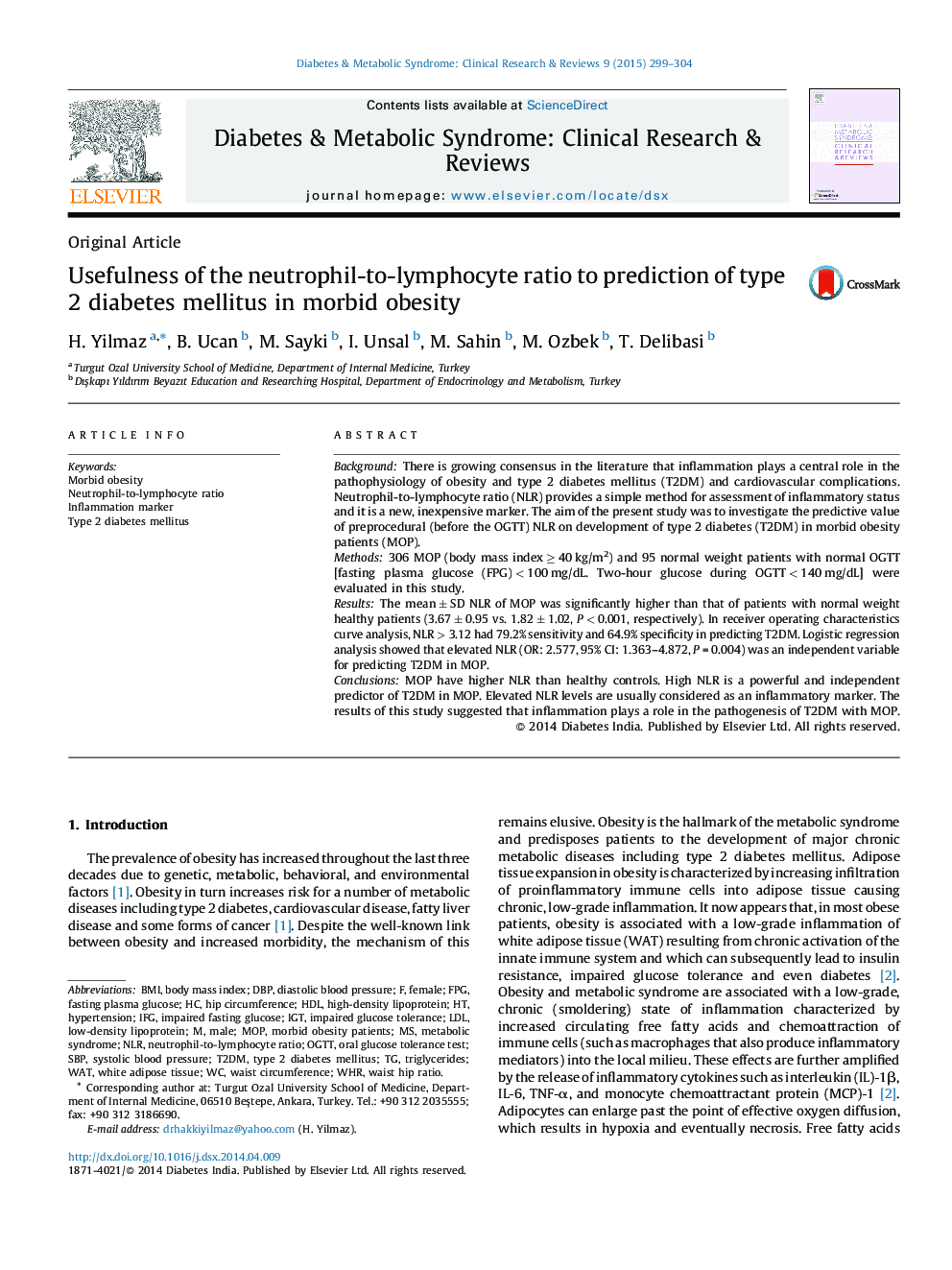| Article ID | Journal | Published Year | Pages | File Type |
|---|---|---|---|---|
| 2910065 | Diabetes & Metabolic Syndrome: Clinical Research & Reviews | 2015 | 6 Pages |
BackgroundThere is growing consensus in the literature that inflammation plays a central role in the pathophysiology of obesity and type 2 diabetes mellitus (T2DM) and cardiovascular complications. Neutrophil-to-lymphocyte ratio (NLR) provides a simple method for assessment of inflammatory status and it is a new, inexpensive marker. The aim of the present study was to investigate the predictive value of preprocedural (before the OGTT) NLR on development of type 2 diabetes (T2DM) in morbid obesity patients (MOP).Methods306 MOP (body mass index ≥ 40 kg/m2) and 95 normal weight patients with normal OGTT [fasting plasma glucose (FPG) < 100 mg/dL. Two-hour glucose during OGTT < 140 mg/dL] were evaluated in this study.ResultsThe mean ± SD NLR of MOP was significantly higher than that of patients with normal weight healthy patients (3.67 ± 0.95 vs. 1.82 ± 1.02, P < 0.001, respectively). In receiver operating characteristics curve analysis, NLR > 3.12 had 79.2% sensitivity and 64.9% specificity in predicting T2DM. Logistic regression analysis showed that elevated NLR (OR: 2.577, 95% CI: 1.363–4.872, P = 0.004) was an independent variable for predicting T2DM in MOP.ConclusionsMOP have higher NLR than healthy controls. High NLR is a powerful and independent predictor of T2DM in MOP. Elevated NLR levels are usually considered as an inflammatory marker. The results of this study suggested that inflammation plays a role in the pathogenesis of T2DM with MOP.
